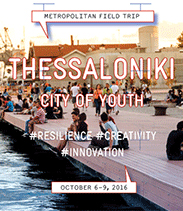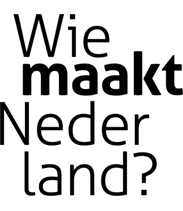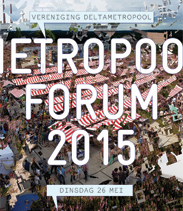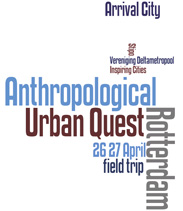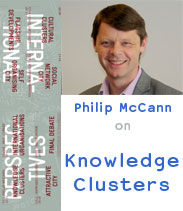"Cultural Clusters as a Commodity for Cities - Plannable and Makeable?" is a research into how local cultural clustering works; what is specifically local and what is specifically global? Other cities, like Amsterdam, often turn to Berlin to try and learn from its success in being a ‘creative city’.

Can this success be duplicated somewhere else, and, if yes, how? We research the driving forces behind this supposedly successful creative city – what are the dynamics, relational character and issues of governance?
Information / downloads
| Yvonne Rijpers | (project manager)
| FactSheet 5.0 Upcoming Cultural Clusters Shape Our Cities! |
| Starting from the makers. A stakeholder perspective on interaction
environments | (thesis)
| FactSheet 4.0 Cultural Clusters, Kultur = Kapital?! |
| Kultur = Kapital - Global Media City Berlin | (publication)
| Cultural Clusters Research - an introduction |
Related webpages
| AFFR Special: Kultur = Kapital | (11 Oct, 2013)
| Berlin BLOG: fieldtip to Berlin | (Dutch)
| het Programma van de Metropool | (Dutch)
| tIP #1 Cultural Clusters, lecture by Bernd Fesel | (English)
| Generating Culture: Roots and Fruits | (VDM, 2005)
| Creatieve Steden! | (VDM, 2002)
| Berlin is the EU’s poster creative city. What makes it successful? What is so special about Berlin in terms of other global (media) cities? What can we learn about clustering when zooming in on the Berlin creative industries and one specific cluster? |
Preface
Creative cities, creative class and global competition
Cities are often regarded as ‘the places to be’: places of renewal, innovation, the emergence of new (sub-) cultures and places where human culture and the excesses of human culture come together. Attracting the ‘creative class’ and boosting the local cultural climate has become one of the vanguards of urban policy, supposedly kick started by Florida’s infamous book. However, is there such a thing as a recipe for city making? Berlin, for example, is often considered to be an elite creative city in Europe, however, | Berlin’s local authority claims | that Berlin’s success story is more coincidence than the result of a consciously planned policy.
The creative economy (or: creative industries) is one of the most dynamic industries in the world and thus a great opportunity for all countries and cities. Worldwide, (trans)national and local policy is developed to uplift certain places or boost the creative economy. Cities are challenged to obtain and perpetuate an eligible position in the global hierarchy to attract the creative class, which is willing and able to travel and settle all over the world. Such as the increasing number of Dutch architects relocating to China or musicians from all over the world flocking to Berlin. The increased mobility has also been fuelled by the rise of new media, which brought about the potential of changing the concept of ‘the place to be’ into a much broader one than before.
Towards a new ranking – world media cities
In the analysis of world media cities, Berlin, Munich and Amsterdam appear to be alpha media cities, next to the ‘usual suspects’ New York, LA, Paris and London. This sheds a different light on the world order of cities. It is mostly overlooked that cities are also places where goods and services are produced for a local and supra-regional cultural market; the supra-regional linkage of local media industry clusters lies at the heart of an emerging system of global media cities within the world-wide urban network. In other words, cultural clusters all over the world are part of a transnational network of culture, whether it is for music, fashion, architecture or another cultural expression.
While policy is developed to uplift certain places or boost the creative economy, it is often unclear what these strategic policies comprise and how they are positioned (if at all) in this transnational network. Are cities aware they compete on a global market? Are they really all tied up in the same endeavor of becoming an authentic, fashionable city, thus killing all that is unique and stands out? What is the impact of (trans)national initiatives such as the | UNCTAD |, which aims to attract creative industries to developing countries and of post socialist Chinese cities like Beijing and Shanghai that are | rapidly catching up on cultural production |?
Creative cities – makeable?
Berlin is the poster city of the European Creative City – it is widely considered as an example of creativity and creative clustering – many other (European) cities are keen to try and duplicate or at least learn from the Berlin ‘formula’. Already in the 1920s, but certainly also since the wall came down, Berlin has had a thriving cultural live and attracted creative entrepreneurs, artists as well as consumers of its cultural goods from all over the world.
In research on global cities as internationally important economic and population centers, Berlin makes it to a mere ‘gamma’ position. However, when looking at global media cities it is one of the ‘alpha’ media cities, arguably just as important. In the field of world media cities, thus in the field of cultural production, Berlin has made a rapid race to the top. Apparently, there is something about Berlin that makes it very attractive for the so-called ‘creative class’ to settle there. What makes Berlin so attractive for cultural entrepreneurs – why do they (want to) cluster in Berlin? And what is the position of Berlin and Berlin located cultural clusters in the aforementioned transnational network?
Research focus
Other cities, like Amsterdam, often turn to Berlin to try and learn from its success in being a ‘creative city’. The question is: can this success be duplicated somewhere else, and, if yes, how? What interests us are the driving forces behind this supposedly successful creative city – what are the dynamics, the relational character and the issues of governance, and most important: What is specifically ‘local’ and what is specifically global about cultural clustering?
Research questions
The main research question:
| How does local cultural clustering work; what is specifically local and what is specifically global about it? |
In other words: how do local cultural clusters develop in connection to place (local) and their surrounding network (global)? This research ‘Cultural Clusters as a Commodity for Cities’ focuses on Berlin as a creative city and particularly zooms in on one of the sectors of the cultural economy – the music sector – in an in-depth way, in order to answer the following sub questions:
- What are the criteria for being a successful creative city and / or a successful creative sector according to these stakeholders?
- Is Berlin a successful creative city in terms of the stakeholders? (cultural entrepreneurs, policy makers, investors, funding institutions, EU, services …)
- How did the music sector emerge and develop? What is the position, role of this sector in Berlin’s economy and more specific in the Berlin media city?
- What is the position of this local cluster (music) in the transnational network of similar cultural clusters?
- What places in these clusters (intra-urban) are important and how did this come about? I.e. what are the local spatial characteristics of this cluster?
- Smart governance: How did policy aimed at the creative economy develop?
- What are the effects of this policy on the music sector – can it / has it been steered; which means were used?
- What is success within the music cluster – what is a successful career path?
- What are the characteristics of the policy network (formal and informal) in Berlin?
- How does the policy network relate to the music cluster? (streams of money, parties involved, ties outside city – network, pipelines)
- What is the influence of local policy on the clustering process in Berlin?
- Agglomeration – stakeholders: why do cultural entrepreneurs / artists / … cluster here and not somewhere else?
Research methodology
In order to be able to grasp (cultural) clustering and the relation of clustering to place as well as the global characteristics, Berlin is the focus of our case study. We will simultaneously look at (part of) the creative economy and at policies, funding and other facilitating networks surrounding and supporting it. The global and local characteristics of cultural clustering will be investigated, by zooming in on a particular part of the Berlin creative economy, the music cluster. The choice of looking at one specific sector is a choice for a more focused and in-depth look, with the aim of being able to draw generic conclusions on local (cultural) clustering.
This will be done by using quantitative as well as qualitative methods. The quantitative part consist of an analysis of - for example - the contribution of the music cluster on the local economy, the streams of money (funding), amount of companies, turnover and so on. The qualitative part consists of interviews with stakeholders in this cluster, for instance local entrepreneurs, policy makers, members of advisory boards and representatives of institutions.
Research process and preliminary results
Phase I
During the first phase of the research, desk research and a | fieldtrip to Berlin | have been undertaken to get a clear view on the present creative industries, the policy field and funding structures. New contacts have been made with possible partners and a basis has been laid for further (international) cooperation.
An initial Cahier and FactSheet will be published shortly, and a debate will be organized as a conclusion to this first phase. The Cahier will provide insights into the composition of the Berlin creative industries and especially the policy and funding surrounding it. The FactSheet will give comparative insight into the creative industries in the Randstad Holland, the Ruhr Area and Berlin. On October 11, 2013 a debate took place, during and in cooperation with the
| Architectural Film Festival Rotterdam |, in which comparisons were made between Berlin and Rotterdam.
Phase II
The second phase of the research will start shortly. More international partners will be involved (some of our new contacts in Berlin), but also other international partners that are interested in cultural clustering. The research question and sub-questions will be addressed through (international) workshops and debates, as well as gathering data through desk-research.
PARTICIPATE !
Are you interested in participating in this project, would you like to receive more information or be kept up-to-date on the progress? Please contact | Yvonne Rijpers |, project manager.
Research supported by:
The New Planning is a collaborative research project between Deltametropolis Association and TU Delft. A consortium of academic, civil society, government and market sectors is being created to meet the urgent need for a new model of strategic spatial planning that will keep the Netherlands at the forefront of territorial governance.

 Archief
Archief

























